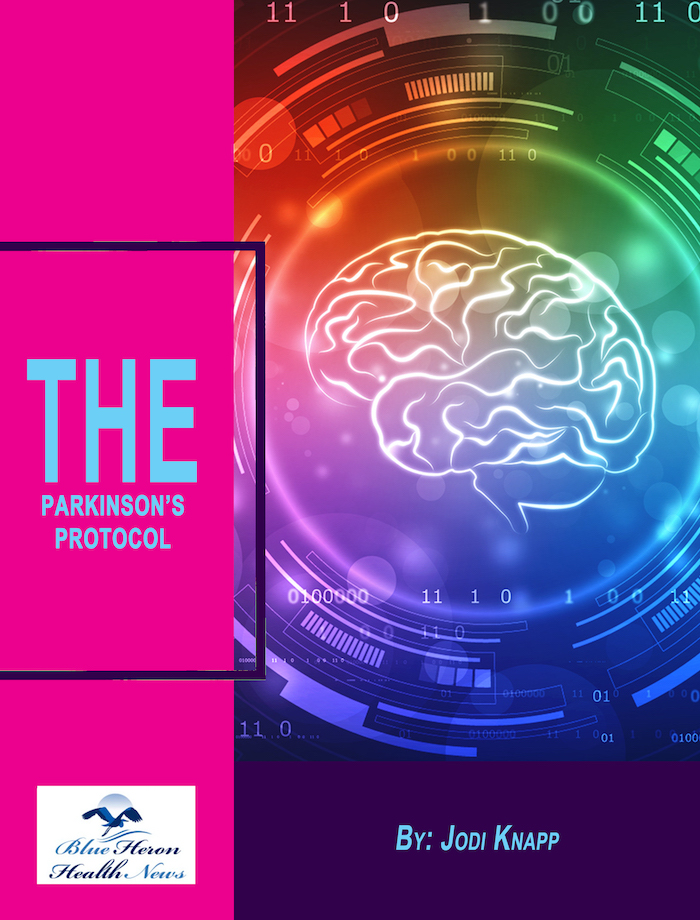
The Parkinson’s Protocol™ By Jodi Knapp Parkinson’s disease cannot be eliminated completely but its symptoms can be reduced, damages can be repaired and its progression can be delayed considerably by using various simple and natural things. In this eBook, a natural program to treat Parkinson’s disease is provided online. it includes 12 easy steps to repair your body and reduce the symptoms of this disease. The creator of this program has divided into four segments to cover a complete plan to treat this disease along with improving your health and life by knowing everything about this health problem. The main focus of this program is on boosting the levels of hormone in your brain by making e a few easy changes in your lifestyle, diet, and thoughts
What are the potential future treatments for Parkinson’s disease?
The future of Parkinson’s disease (PD) treatment is filled with promising possibilities, as researchers explore various innovative approaches to slow, halt, or even reverse the progression of the disease. Here’s a deeper dive into some of the most exciting and cutting-edge areas of research:
1. Gene Therapy
Gene therapy aims to correct or replace defective genes in the body, and it holds immense potential for Parkinson’s treatment. One of the most promising avenues is delivering genes into the brain to either restore dopamine production or protect the neurons that produce it. Dopamine is a neurotransmitter that is critical for motor control, and its loss is what causes the movement issues in PD.
- Gene Delivery of Dopamine-Producing Enzymes: Researchers are exploring the possibility of delivering genes that encode enzymes responsible for dopamine production, such as AADC (aromatic L-amino acid decarboxylase) or GCH1 (GTP cyclohydrolase 1), to increase dopamine levels in the brain. One of the most significant challenges has been safely and effectively delivering these genes to the right parts of the brain, but progress is being made in this area.
- Neuroprotective Genes: Another approach is to deliver genes that produce neuroprotective proteins that may help prevent the degeneration of dopamine-producing neurons. For example, a gene therapy approach to produce the enzyme glial-derived neurotrophic factor (GDNF), which supports neuronal growth, has shown promise in early studies.
These gene therapy treatments are still in the early stages, but clinical trials have already demonstrated some success, and we can expect more sophisticated approaches to emerge in the future.
2. Stem Cell Therapy
Stem cell therapy offers another groundbreaking approach to treating Parkinson’s disease by potentially regenerating or replacing damaged neurons in the brain. PD is characterized by the progressive loss of dopamine-producing neurons, and stem cell research aims to restore this lost function.
- Induced Pluripotent Stem Cells (iPSCs): iPSCs are a promising source of dopamine-producing neurons. Scientists have been exploring methods to generate dopamine-producing neurons from iPSCs, which are derived from a patient’s own cells (like skin cells), eliminating concerns about immune rejection. These neurons could be transplanted back into the brain to replace the damaged ones.
- Embryonic Stem Cells: Another avenue being explored involves using embryonic stem cells, which have the ability to differentiate into any type of cell in the body, including dopamine-producing neurons. Clinical trials involving stem cell transplants are ongoing, but they face challenges such as controlling the differentiation process and ensuring the cells function correctly once implanted.
While stem cell therapy has shown promise in preclinical studies, further research is necessary to ensure safety, efficacy, and long-term viability. However, as technology advances, stem cells could play a central role in Parkinson’s treatment.
3. Protein Aggregation Inhibition
The buildup of alpha-synuclein, a protein that forms toxic clumps in the brains of Parkinson’s patients, is one of the hallmarks of the disease. These clumps, known as Lewy bodies, disrupt normal brain function. Thus, many research efforts are focused on developing therapies to prevent or reduce this protein aggregation.
- Monoclonal Antibodies: Immunotherapy techniques, such as monoclonal antibodies, are being designed to target and neutralize alpha-synuclein aggregates in the brain. These antibodies are engineered to bind to alpha-synuclein, preventing it from forming toxic clumps or promoting its clearance from the brain.
- Small Molecules: Researchers are also investigating small molecules that can break up or inhibit the formation of alpha-synuclein aggregates. These could potentially be administered as oral medications and may provide a less invasive treatment option for Parkinson’s patients.
This area of research is still in its early stages, but targeting protein aggregation could hold great promise for slowing the progression of the disease or even preventing it from advancing in the first place.
4. Neuroprotective Therapies
One of the primary goals of future Parkinson’s treatments is to protect the brain from further damage and preserve the remaining dopamine-producing neurons. Several neuroprotective strategies are being explored:
- Mitochondrial Therapies: Mitochondria are the energy-producing structures in cells, and dysfunction in these structures is a contributing factor in Parkinson’s. Researchers are exploring drugs and compounds that can repair or protect mitochondria, thus preventing neuronal death.
- Anti-Inflammatory Approaches: Inflammation plays a key role in the progression of neurodegenerative diseases, including Parkinson’s. Research into anti-inflammatory therapies aims to reduce the harmful inflammatory processes in the brain that contribute to the destruction of dopamine-producing neurons. Specific immune-modulating therapies are being investigated, including those that target microglia (the brain’s immune cells) to reduce neuroinflammation.
- Oxidative Stress Reduction: Oxidative stress occurs when there is an imbalance between free radicals and antioxidants in the body, leading to cellular damage. Many Parkinson’s treatments are exploring antioxidants that can combat oxidative stress and protect neurons from damage.
5. Advanced Deep Brain Stimulation (DBS)
Deep brain stimulation (DBS) is already an established treatment for advanced Parkinson’s, where electrodes are implanted in specific brain areas to help control motor symptoms. However, future innovations in DBS may make it even more effective.
- Personalized DBS: Current DBS treatments involve fixed stimulation patterns, but new advancements aim to personalize the stimulation based on real-time brain activity. For example, adaptive DBS, which adjusts the stimulation in response to neural activity, could improve outcomes and reduce side effects.
- Focused Ultrasound: Researchers are exploring non-invasive methods like focused ultrasound to target deep brain structures, effectively treating symptoms without the need for invasive surgery. This approach could be a game-changer for those who cannot undergo traditional DBS implantation.
6. Immunotherapy and Vaccines
Another promising avenue for Parkinson’s treatment is the development of vaccines or immune-based therapies designed to target harmful proteins, particularly alpha-synuclein. Immunotherapy approaches aim to stimulate the immune system to recognize and clear toxic proteins from the brain.
- Vaccines: Vaccine-based therapies aim to induce the body’s immune system to produce antibodies against alpha-synuclein. Early trials are exploring different ways to administer these vaccines, and results are still being assessed, but they hold potential for preventing the formation of harmful aggregates.
- Tolerization Strategies: In contrast to vaccination, tolerization strategies are being explored to induce a controlled immune response that reduces the toxic effects of alpha-synuclein without triggering an overactive immune response. These approaches aim to teach the immune system to better manage the protein without causing inflammation or other side effects.
7. Biomarkers for Early Diagnosis and Personalized Treatments
The ability to diagnose Parkinson’s disease at an early stage is crucial for effective treatment. Research is focused on identifying biomarkers—measurable indicators that signal the presence of the disease. These could help with:
- Early Diagnosis: With more precise biomarkers, doctors could diagnose Parkinson’s earlier, potentially before patients exhibit noticeable symptoms, enabling earlier intervention.
- Personalized Treatment Plans: Biomarkers could also help create more personalized treatment strategies. Since PD affects patients differently, understanding individual biomarker profiles could allow for more targeted, effective therapies that are tailored to each patient’s specific needs.
8. Lifestyle Interventions
While pharmacological and surgical treatments are important, lifestyle interventions—particularly those that target the brain and nervous system—are also gaining attention as complementary strategies for managing Parkinson’s.
- Exercise: Studies show that physical activity may have a neuroprotective effect, slowing disease progression and improving motor and non-motor symptoms. Researchers are working to refine exercise regimens to maximize benefits for Parkinson’s patients.
- Diet and Nutrition: Certain diets, such as those rich in antioxidants or omega-3 fatty acids, may help protect neurons from damage. Nutritional supplements or diets tailored to Parkinson’s needs are being studied as a way to support brain health and manage symptoms.
Conclusion
In conclusion, the future of Parkinson’s disease treatment is highly promising, with multiple approaches being investigated to stop or even reverse the disease. While many of these treatments are still in the research or clinical trial stages, the combination of gene therapies, stem cell treatments, protein aggregation inhibition, and advances in brain stimulation and immunotherapies could drastically change the landscape of Parkinson’s treatment in the coming years. Continued research, clinical trials, and technological advancements will be key in making these futuristic therapies a reality for patients worldwide.

The Parkinson’s Protocol™ By Jodi Knapp Parkinson’s disease cannot be eliminated completely but its symptoms can be reduced, damages can be repaired and its progression can be delayed considerably by using various simple and natural things. In this eBook, a natural program to treat Parkinson’s disease is provided online. it includes 12 easy steps to repair your body and reduce the symptoms of this disease. The creator of this program has divided into four segments to cover a complete plan to treat this disease along with improving your health and life by knowing everything about this health problem. The main focus of this program is on boosting the levels of hormone in your brain by making e a few easy changes in your lifestyle, diet, and thoughts